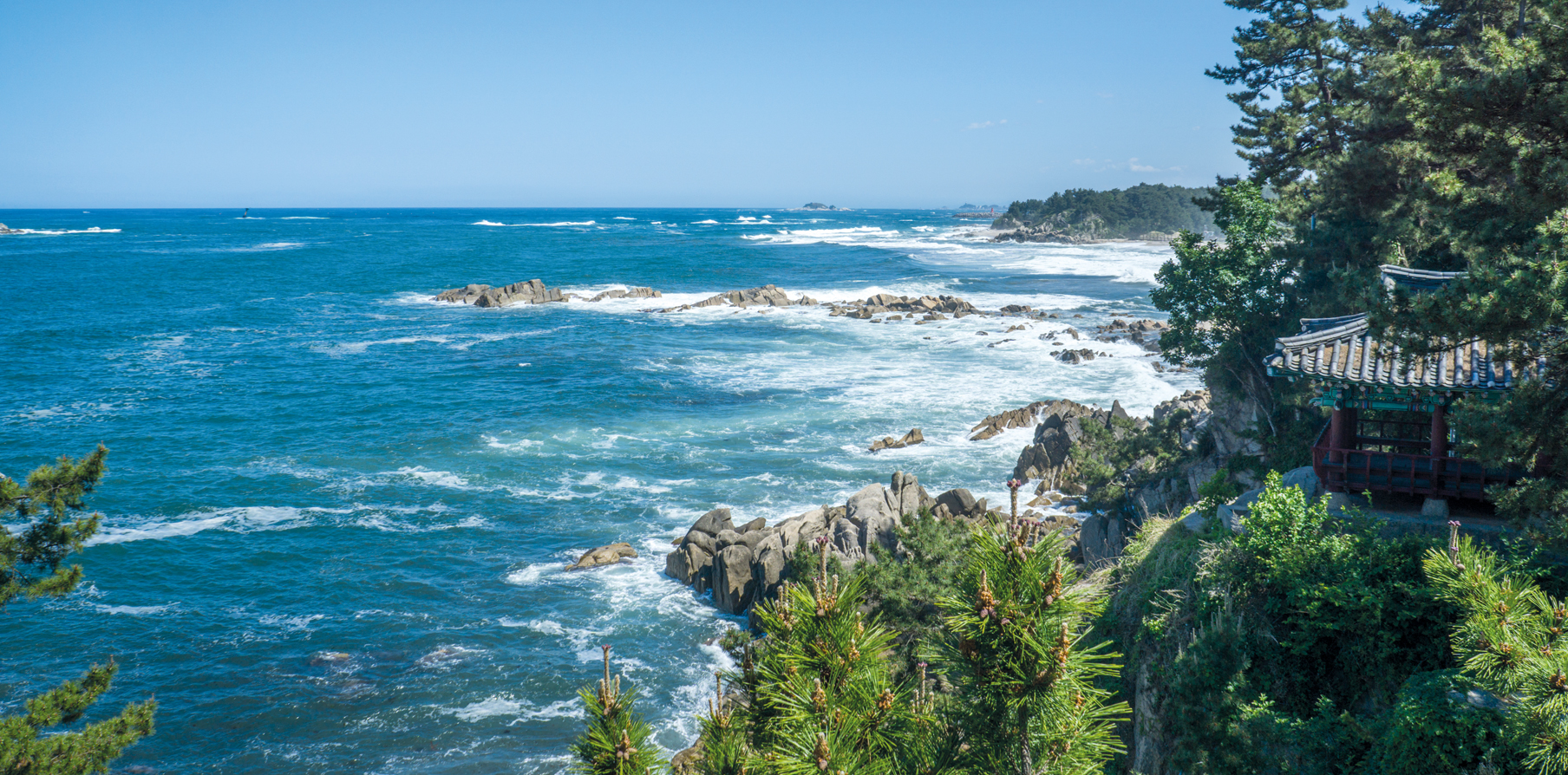Travel
Remote Rewards
Goseong-gun County
Gangwon-do Province on the nation’s east coast is especially popular in the summer thanks to the sunrise on the East Sea, the emerald colors of the ocean view and tanning on fine sandy beaches. Remote beaches there are also known for their tranquility and beautiful surroundings rather than being packed with throngs of tourists. Goseong-gun County in the province is home to Songjiho Beach, which offers snorkeling, car camping and all the luxuries beaches afford.
Written & photographed by• Cho Yongsik
Lush pine groves provide a refreshing coolness amid the white sands of the 4-km Songjiho Beach. The shallow waters allow children to frolic there safely, and the white beach is also great for winding down with gorgeous scenery. Due to the coronavirus pandemic, however, the beach's tourist season will be later than normal: July 10 to Aug. 16. Stroll down the beach to see a boulder among the ocean waves. The sight of Jukdo Island — renowned for beautiful sunrise backdrops — makes one yearn for tropical life.
Lining the oceanside is Renebleu by Walkerhill Hotel, as well as surfing facilities, lessons and rental services. A surfing instructor who works at Songjiho Beach said, “Surfers who previously frequented Yangyang Beach have replaced their retreat spot with Songjiho Beach.” The lengthy beach by the East Sea is increasingly filled with surfers seeking exciting seaside leisure and activities.
Camp by the Sea
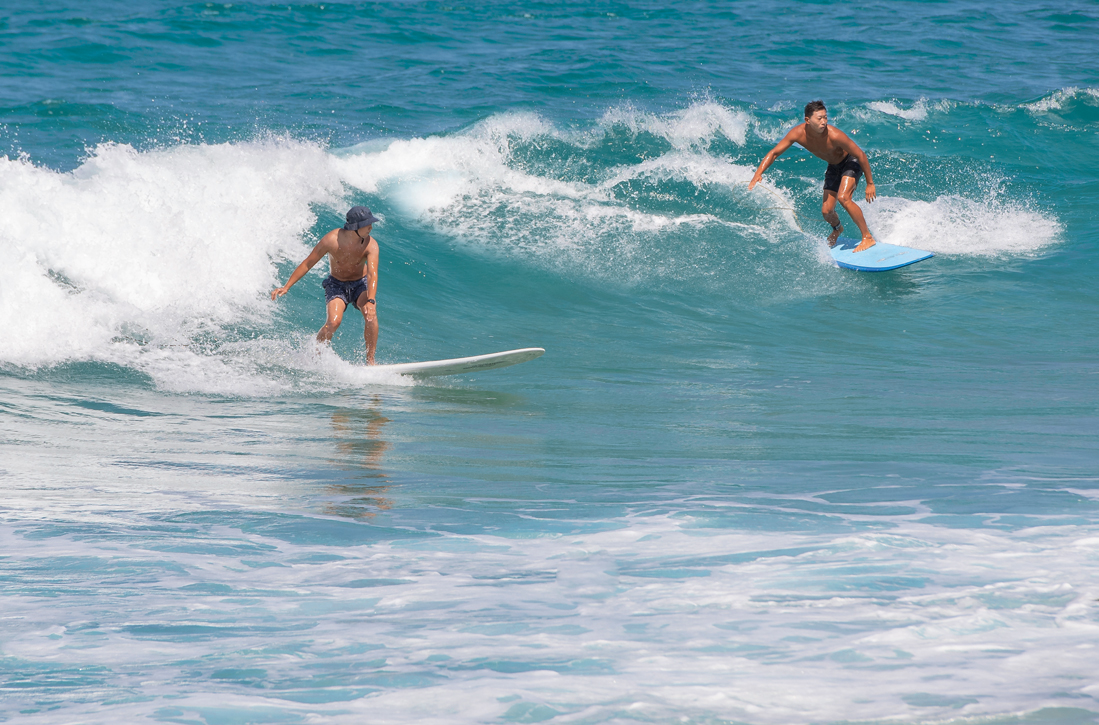
Songjiho Beach in Goseong-gun County, Gangwon-do Province, boasts 4 km of clean sand as Korea’s northernmost surfing spot. © Goseong-gun
A highlight of Songjiho Beach is its car campgrounds. Families are increasingly drawn to the area, where the flapping sound of waves delights the ears. The water is also fine to dive into at any time, too. The breeze takes over by the evening, followed by the chirping sounds of birds in the exotic, moonlit forest. A trail leads from the campgrounds to the beach, where a cycling path awaits. The shore-side, 243-km path links Unification Observatory Tower to Samcheok Gopo Maeul Village. Idle routes like patrol walkways and village alleys were adjoined to form the path, which is also connected to Songjiho Walk Trail.
Follow the signposts at the trail to arrive at the lakeside, which boasts a tranquil atmosphere barely disturbed by tourism. Trails of various types like paved and soiled are laid out, with dancing reeds and their fluttering reflections poised at the center of the lake. The calm surface of the lake reflects the skies and Songjiho Observatory Tower from afar. The walk trail is 5.2 km long, a distance that takes about two hours to cover by foot.
Adjacent to the walk trail is Goseong Wanggok Village, which was founded in the 14th century and retains the southern traditional style of Hanok and thatched-roof houses in their original structures. Seeing them gives the impression of being transported 600 years back in time. Water lilies adorn the pond in summertime, while traditional thatch and tile-roofed houses display old components like crock roofs, gateless gardens, stables and rafters. The village can hold up to 50 households, of which 40 are occupied with residents. Treadmills, rice mills, traditional confectionary production, seesaws and swings are also available for visitors. The site is a five-minute drive or a 40-minute walk from Songjiho Auto Camping Resort.
Saunter by the Shore
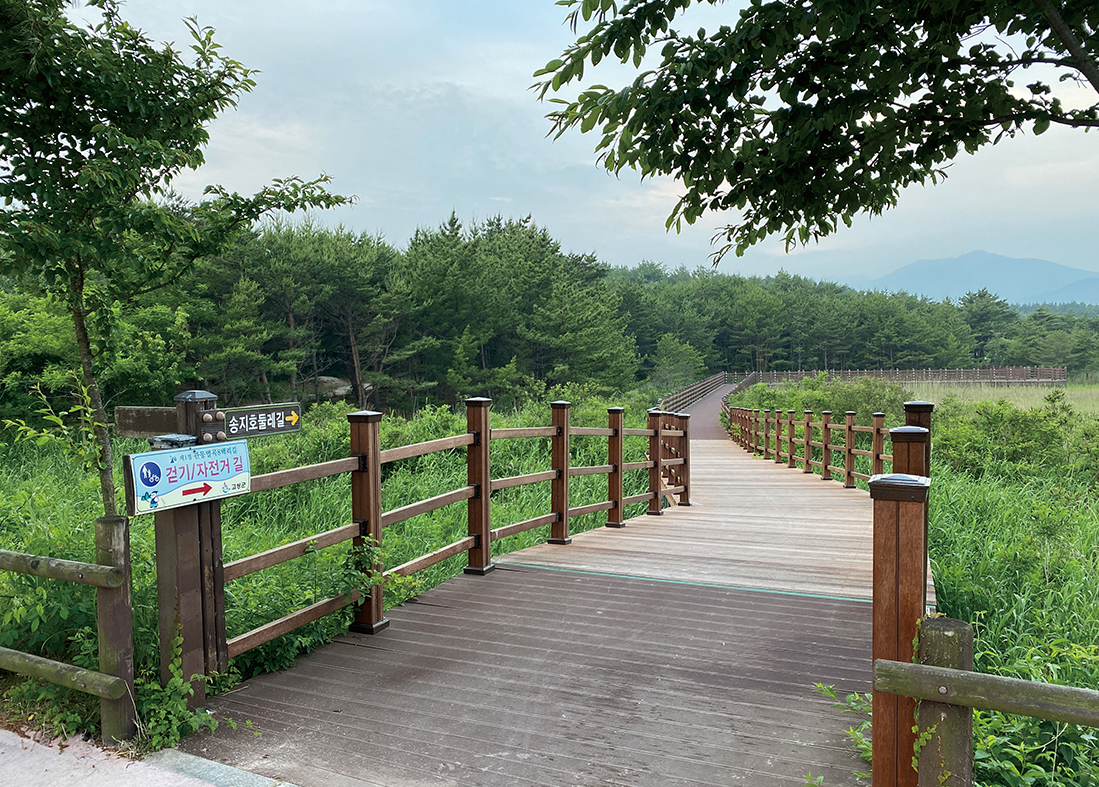
From Songjiho Walk Trail, visitors can see a pond, pine groves and waters of the East Sea all at once.
The pavilions Cheonhagjeong and Cheongganjeong served as rest sites in ancient times. The former is among the eight highlights of the Goeseong-gun region buttressed on a seaside cliff that is both mythical and bizarrely shaped. To the south, it looks out to Cheongganjeong and Baekdo Island and to its north is Neungpadae. Little wonder that these scenic spots attract a constant stream of visitors. Next to Cheonhagjeong is Cheonggan Beach, which remains mostly undisturbed.
Cheongganjeong, situated 3.1 km from Cheonhagjeong, is clustered with majestic pagoda structures and roofed pavilions. Joseon Dynasty scholar Song Siyeol dropped by the pavilion after his stay on Geumgangsan Mountain, and a signboard in his original writing hangs on display. The spot is perfect for savoring the scenery of the East Sea with mountainous grandeur on the opposite side.
Geojinhang Port, about a 20-minute walk from Songjiho Beach, has a lighthouse and park named Haemaji (Sunrise). The lighthouse has surrounding walls containing paintings of other lighthouses in Korea. Forestry in the vicinity offers pleasant paths for strolling. Traditionally, fishermen wished for good fortune before heading out for the day’s catch at a relic dedicated to the patron god of villages, Seonandang or Seonghwangdang. This holy spot sports the portrait of a widow who lost her husband at sea and is flanked by an observatory deck.
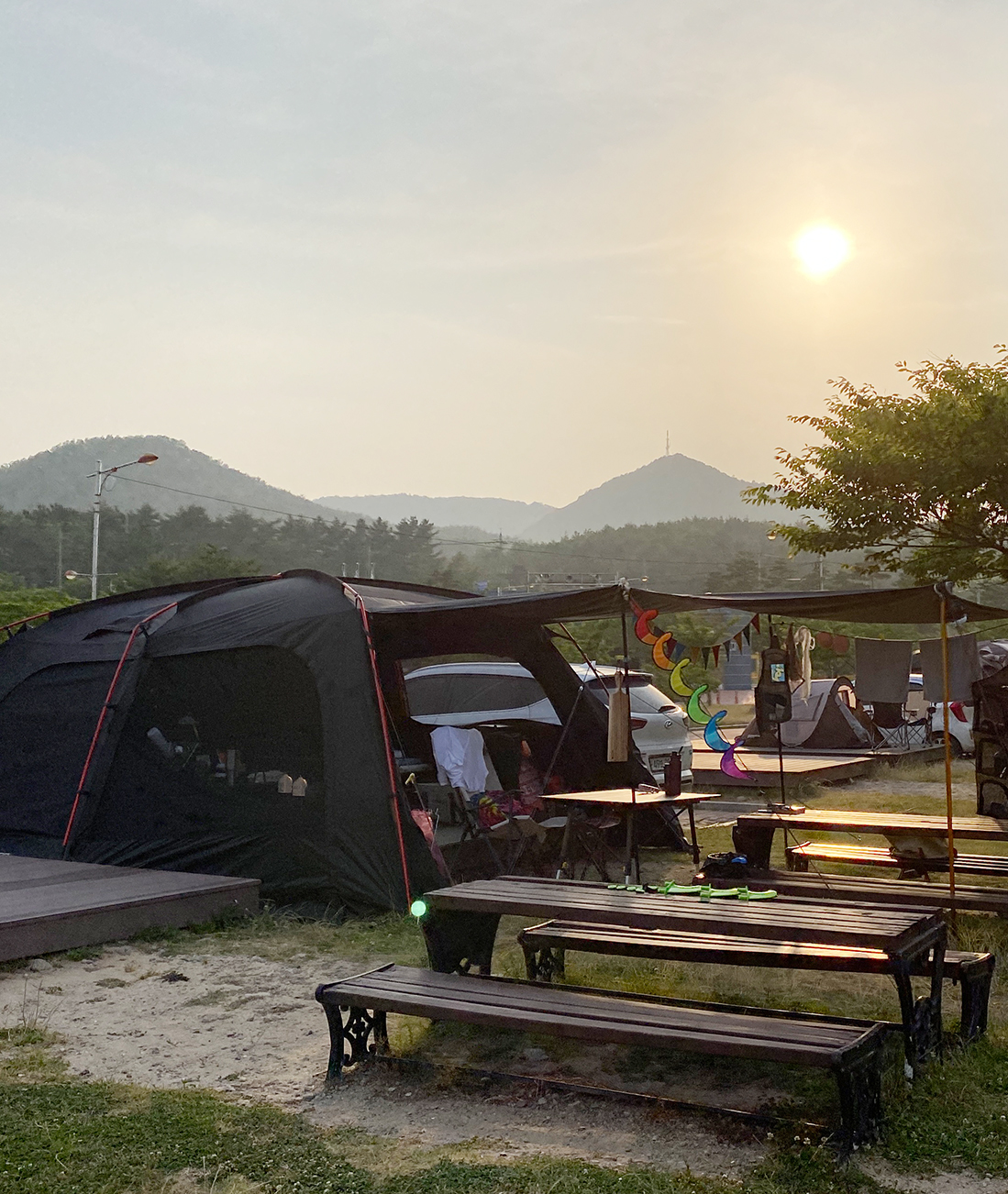
Songjiho Auto Camping Resort is famous for clear waters, pristine sand and a lookout spot for migratory birds.
Vivid Vicinity
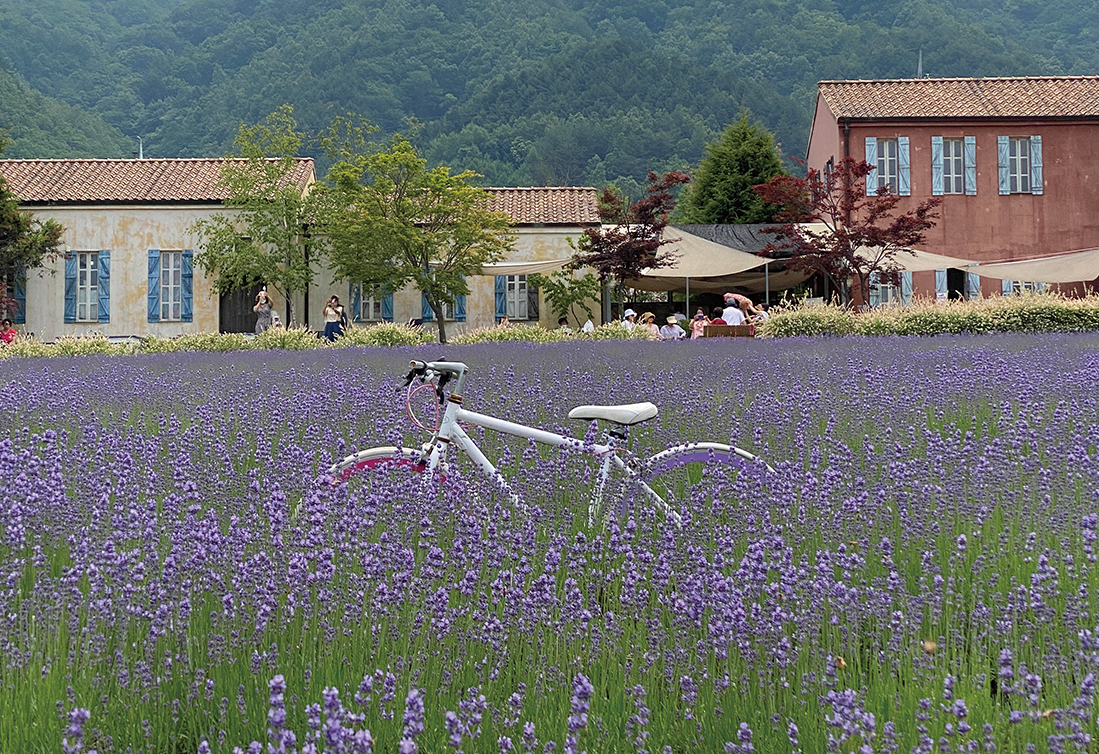
Every June, Hani Lavender Farm attracts visitors with its flora. Though the farm’s annual festival this year has been canceled due to COVID-19, mask-clad visitors are welcome to stroll the lush fields.
The many ports in the vicinity of Songjiho Beach include Gonhyunjinhang, Gajinhang, Geojinhang, Chodohang and Daejinhang. Chilled and tangy mulhoe (cold raw fish soup) is a specialty at these ports. Daejinhang is near Unification Observatory Tower and the DMZ Museum, where fishing boats and backpackers are seen between lighthouse silhouettes.
Makguksu (buckwheat noodles) is a regional specialty featuring flavorful soup from dongchimi (radish water kimchi), as is Ayajinhang’s zesty Omi naengmyeon (cold noodles).
From the revamped Goseong Unification Observatory Tower, scenic landmarks like Guseonbong Peak and Haegeumgang Rock can be spotted. The DMZ Peace Trail, which spans 7.9 km overall and 2.7 km of pedestrian walkway, can be explored by foot or car. Though the lookout for the peak and the rock are temporarily closed because of COVID-19, make sure to visit after the pandemic subsides.
Goseong-gun offers more enjoyment in addition to its beachside and port destinations. Away from the beach and inland on Seoraksan Mountain is a village filled with lavender. Hani Lavender Farm, a 20-minute drive from the car campgrounds, is an aromatic haven for bees. Sunflowers, herb, chamomile and metasequoia fill the photogenic flora in addition to lavender.
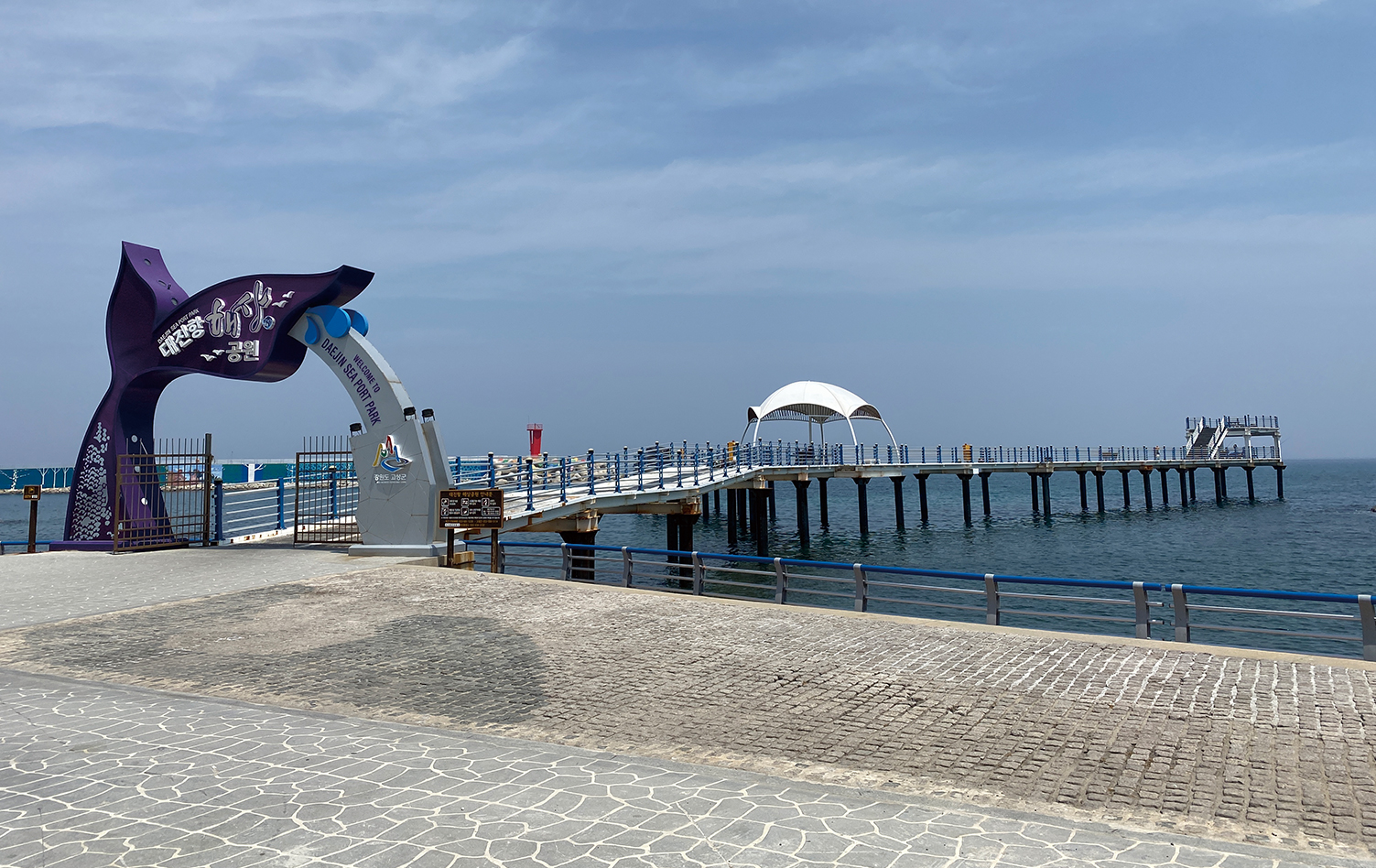
Daejinhang is Korea’s closest port to the Military Demarcation Line. Two hundred fishing boats are active here, and this scenic backdrop is often seen in films.

